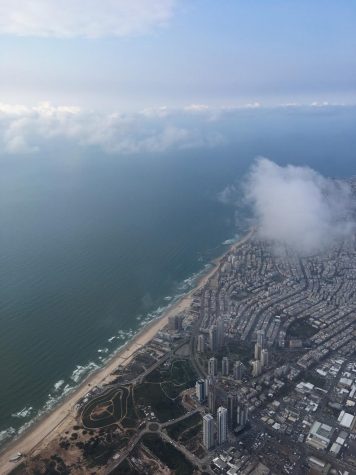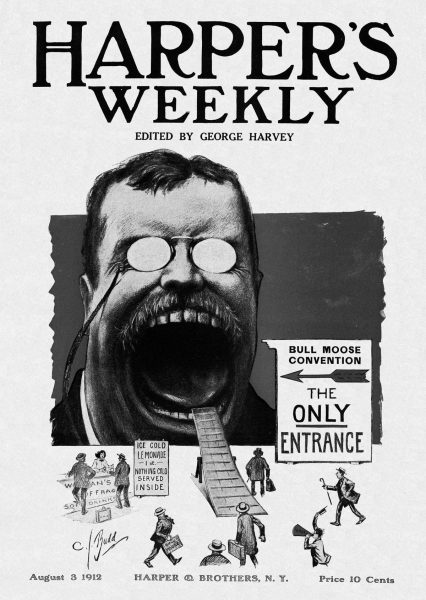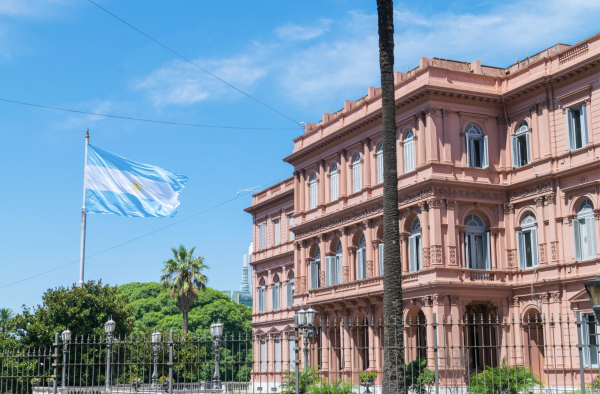Peace in the Mid East?
A campaign advertisement from Benny Gantz that translates to “Worries about Israel” on the left, and “Worries about himself” on the right, next to a picture of Netanyahu.
Peace in the Middle East has historically been a notoriously complicated subject. Recently, however, President Trump has proposed a new peace plan that he claims will create a two-state solution between Israel and Palestine, giving both parties four years to accept the terms. The plan has many complexities, and has received backlash from both parties, especially from the Palestinian front.
An important note of contention between Israel and Palestine is, for one, the problem of Palestinian refugees. Palestinians believe that the millions who fled during Israel’s war of independence in 1948 should have a “right of return” back to Israel. Israel, however, doesn’t want them to return for fear that the refugees would become the population’s majority and harm the state’s “Jewish character” (LATimes, 2007). Many believe the solution to this could be monetary compensation for lost property, but Trump’s Middle East plan tackles the refugee debate by allowing the refugees the choice between living in Palestine, staying in their current countries, or moving to a consenting country in the Organization of Islamic Cooperation. The plan would also allow Palestinians to move more freely between the West Bank and Gaza, which means that families separated during the refugee crisis could more easily reunite. The current proposal is to build a high-speed railway between them, though it’s unclear where funds for such a project would come from. Currently, the most likely funders are the U.S. and various Arab states who favor the plan.
Another major point of contention is the question of Jerusalem as a capital. Jerusalem sits between Israel and the West Bank, a region bordering Jordan, and has both Jewish and Islamic holy sites, so neither side wants to give it up as a capital. In Trump’s plan, Jerusalem would become Israel’s “undivided capital,” meaning Trump chose the Israeli side, which may be a deal-breaker. While Trump did suggest that Palestine could have a capital in eastern Jerusalem, Benjamin Netanyahu, Israel’s Prime Minister, clarified that Trump meant an area beyond the separation wall, making it a poor compromise for Palestinians. To highlight how disputed this idea is, Palestine’s president, Mahmoud Abbas, responded to Trump’s proposal by saying that “Jerusalem was not for sale,” (BBC, 2020). The severity of this long-standing debate, without much compromise from Trump, may prove to dismantle the plan entirely. One of our students, Emma Tiersten-Nyman ’20, responded to this and said, “Since many of these issues have been so hotly contested for so long, the sides are going to have to find a compromise or else there can never be a deal.”
While there are too many complexities to the Israel-Palestine conflict and Trump’s plan to cover, one aspect of the plan that previous proposals haven’t included is a map to illustrate what Israel-Palestine borders would look like. For one, the current proposal for Palestine would include almost all of the West Bank, undeveloped areas between Jordan and Jerusalem, and the Gaza strip. Also, the plan allows for the addition of towns adjacent to the West Bank (also known as the “Triangle”) to Palestine, if both sides agree on it.
On Tuesday, January 28th, 2020, at a press conference on the matter, Netanyahu announced that Israel would halt settlement construction that may interfere with the outlined Palestinian state plan. However, Israel would also apply any new laws from the plan to current settlements and areas in the Jordan Valley, even without Palestinian approval.
Additionally, the plan demands getting rid of Hamas and Islamic Jihad, Palestinian groups that are viewed as terroristic by most of the world. Currently, Hamas has a strong hold over Gaza, so its removal would definitely have an impact on Palestine.
Unsurprisingly, the plan has yet to receive anything even close to unanimous support from either side or the international community. Palestinian leaders almost immediately turned down the plan, considering it “dead on arrival” (NYTimes, 2020) as they were not involved in the negotiations. Even members of Israel, namely the Israeli left, shot down the plan, claiming it would ruin any hope for a two-state-solution. There was similar backlash from countries like Turkey who think the plan would “kill the two-state solution,” (TIME, 2020). Similarly, some of our students oppose the plan, including Celeste Abourjeili ’20 who said, “Because Palestinians don’t agree with the plan, and because the plan itself favors Israel, I don’t think it’ll have a positive impact on the states’ relationship.”
There has also been support, though. The Israeli right, namely Netanyahu, has shown its support, along with international powers like Egypt. Egypt’s foreign ministry said they actually appreciate the U.S.’s efforts at settling the Israeli-Palestinian conflict, and believe it will contribute to Middle Eastern stability.
With such contrasting opinions and a lack of compromising solutions for major points of contention, this plan is not looking like a guarantee. Will either side relent? Or will there just be more and more Middle Eastern peace plans made to no avail?
“Since many of these issues have been so hotly contested for so long, the sides are going to have to find a compromise or else there can never be a deal.”

Pictured are Israel’s beaches from above.
Leann Goldberg is an Editor-in-Chief for ‘The Science Survey.’ She thinks journalistic writing is important because it allows the public to stay informed...











